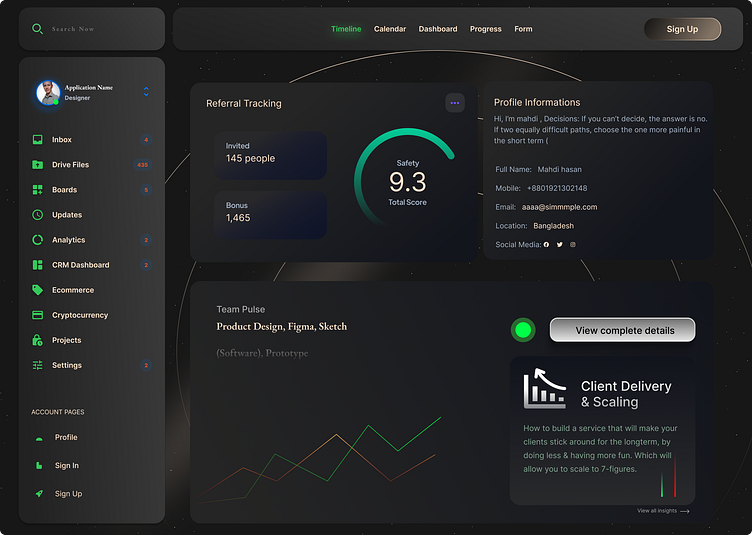Dashboard UI
1. Introduction
Brief overview of the project and its objectives.
2. Problem Statement
Description of the challenges faced by designers in managing their tasks, projects, and collaboration efforts.
3. Research and Analysis
User research conducted to understand the needs and pain points of designers.
Competitor analysis to identify existing solutions and their strengths/weaknesses.
4. Design Process
Ideation phase: Brainstorming sessions and concept development.
Prototyping: Creating wireframes and mockups for feedback.
Iterative design: Incorporating feedback and refining the interface.
5. Solution
Description of the designer dashboard's features and functionalities.
Explanation of how the solution addresses the identified problems.
6. Implementation
Details of the technology stack used for development.
Challenges faced during implementation and how they were overcome.
7. Testing
Overview of the testing phase, including usability testing and bug fixing.
8. Results
Metrics used to measure the success of the designer dashboard (e.g., user adoption rate, task completion time).
Qualitative feedback from users.
9. Impact
Description of how the designer dashboard improved the workflow and productivity of designers.
Any other positive outcomes or benefits observed.
10. Conclusion
Summary of key findings and outcomes.
Lessons learned and areas for future improvement.
11. References
Any sources or references used during the project.
